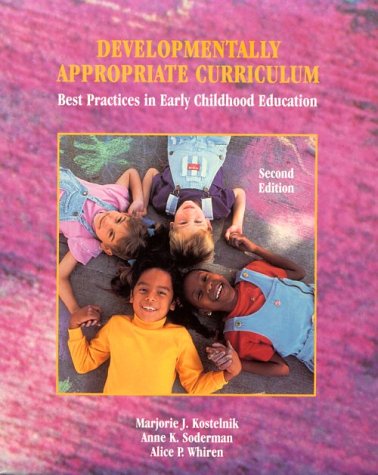Items related to Developmentally Appropriate Curriculum: Best Practices...
Developmentally Appropriate Curriculum: Best Practices in Early Childhood Education (2nd Edition) - Softcover

Synopsis
This comprehensive book brings together the best information currently available for developing an integrated approach to curriculum and instruction in the early years. The book creates a bridge between the worlds of child care and early education, as well as between preprimary and primary programs. The effective ideas presented are designed to give readers a cohesive view of the what, why, and how of developmentally appropriate practices. Each chapter addresses principles of age-appropriateness, individual appropriateness, and social and cultural appropriateness. It is designed for current and future early childhood professionals working in formal group settings with young children ranging in age from three to eight.
"synopsis" may belong to another edition of this title.
From the Back Cover
This comprehensive book brings together the best information currently available for developing an integrated approach to curriculum and instruction in the early years. The book creates a bridge between the worlds of child care and early education, as well as between preprimary and primary programs. The effective ideas presented are designed to give readers a cohesive view of the what, why, and how of developmentally appropriate practices. Each chapter addresses principles of age-appropriateness, individual appropriateness, and social and cultural appropriateness. It is designed for current and future early childhood professionals working in formal group settings with young children ranging in age from three to eight.
"About this title" may belong to another edition of this title.
FREE shipping within U.S.A.
Destination, rates & speedsSearch results for Developmentally Appropriate Curriculum: Best Practices...
Developmentally Appropriate Curriculum: Best Practices in Early Childhood Education
Seller: ThriftBooks-Dallas, Dallas, TX, U.S.A.
Paperback. Condition: Good. No Jacket. Pages can have notes/highlighting. Spine may show signs of wear. ~ ThriftBooks: Read More, Spend Less 2.25. Seller Inventory # G013080407XI3N00
Quantity: 1 available
Developmentally Appropriate Curriculum: Best Practices in Early Childhood Education (2nd Edition)
Seller: ThriftBooks-Atlanta, AUSTELL, GA, U.S.A.
Paperback. Condition: Good. No Jacket. Pages can have notes/highlighting. Spine may show signs of wear. ~ ThriftBooks: Read More, Spend Less 2.25. Seller Inventory # G013080407XI3N00
Quantity: 1 available

